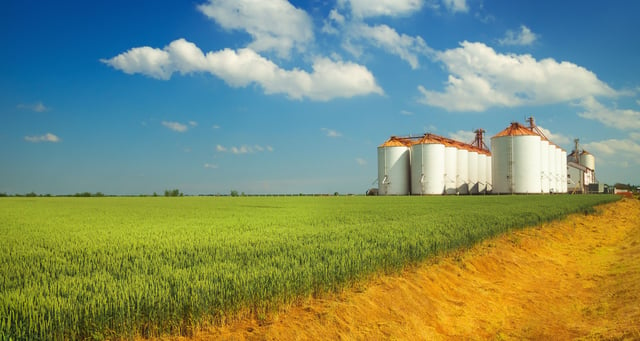Increasing crop yields generates R&D tax credits for American farmers.

Agriculture is one of the most diverse and exciting industries in the United States. From farming livestock to innovating packing techniques, the agricultural industry develops solutions to improve the lives of all Americans.
What is the Research & Development tax credit?
The Research & Development (R&D) tax credit helps companies conducting activities aimed at solving problems. Outlined in the Internal Revenue Service (IRS) Internal Revenue Code Section 41, this U.S. federal incentive allows companies with qualified research activities (QRAs) (i.e., qualified research expenditures or QREs) to offset present or future liabilities and reduce taxable income. The program encourages innovation by providing businesses with funds to invest in R&D projects that may spur growth and strengthen profits.
Let's review the four-part test that development efforts must pass to qualify for the R&D tax credit.
Qualifying R&D activities: The four-part test
Subtest 1: Permitted purpose
Qualified R&D activities must aim to develop or improve a business component (e.g., a product, process, software, technique, formula or invention). If the effort aims at improving one of these five business components, then the improvement needs to be functional, not aesthetic.
Example: An activity could be irrigation-system improvement to either better target crops, or use less water to achieve similar results.
Subtest 2: Elimination of technical uncertainty
At the outset of qualified R&D activities, there must be unknown information. This information must pertain to either capability (i.e., “Can we accomplish this project?”), method (i.e., “Do we know the process for completing this project?”), or appropriate design (i.e., “What is the correct or optimal design?”).

Example: An activity may seek to optimize new pesticide formulations, soil additives, or soil contents.
Subtest 3: Process of experimentation
Answering technical uncertainties, qualified R&D activities must:
- Evaluate at least one alternative where the capability, method, or appropriate design is unknown.
- Involve a process of experimentation (e.g., iterative, trial and error, evolving design, or scientific method).
Example: Developing new organic pesticides, a company may design and test different combinations of materials and ingredients to formulate the best product. These activities would likely pass this test.
Subtest 4: Technological in nature
The process of experimentation must use scientific principles.
Design, improvement, and innovation
Enhancing crop diversity, durability, and yield, the agricultural industry spends time and money finding solutions that feed people in America and worldwide. Federal and state R&D tax-credit programs apply to not only innovative farmers, but also companies cooperating with farmers and ranchers. Companies in the agricultural industry that may qualify include farm-equipment developers, fertilizer manufacturers, livestock-feed developers, plant and seed companies, and many others.
Qualified research activities in the agricultural industry
Examples of agricultural activities that may qualify for the R&D tax credit include:
- Developing new or improved solutions to unique irrigation challenges.
- Designing new or improved agricultural products (e.g., automated harvesting functions or farm-harvesting equipment).
- Developing new or improved ways to control or prevent livestock disease or crop pests.
- Developing unique greenhouse environments to improve growing conditions.
- Developing new or improved breeding techniques for fishes or livestock.
- Designing new or improved soil additives to enhance crop diversity, durability, or yield.
- Developing new or improved technologies to decrease harvest-cycle times, increase yield, or maximize production efficiency.
- Developing new or improved bio-fabrication technologies.
- Developing environmentally-friendly fertilizers and pesticides.
- Hybridizing plants (i.e., creating new strains) to enhance crop durability, resilience against disease, or taste.
- Experimenting to increase crop shelf life.
- Developing new or improved feeds, feeding techniques, or feeding processes.
- Developing new or improved packaging to optimize shelf life or transportability.
- Precision Farming Techniques
- Developing new or improved equipment, products, or techniques for the budding urban-agriculture industry.
Acena Consulting builds the bridge between these activities and R&D tax-credit qualification that frequently increases cash flow.
Our streamlined process builds upon a solid foundation of proprietary technologies to document and support your qualified research activities.
We offer free evaluations of your activities and free consultations about potential credits available. Contact us today, and monetize your R&D activities!



